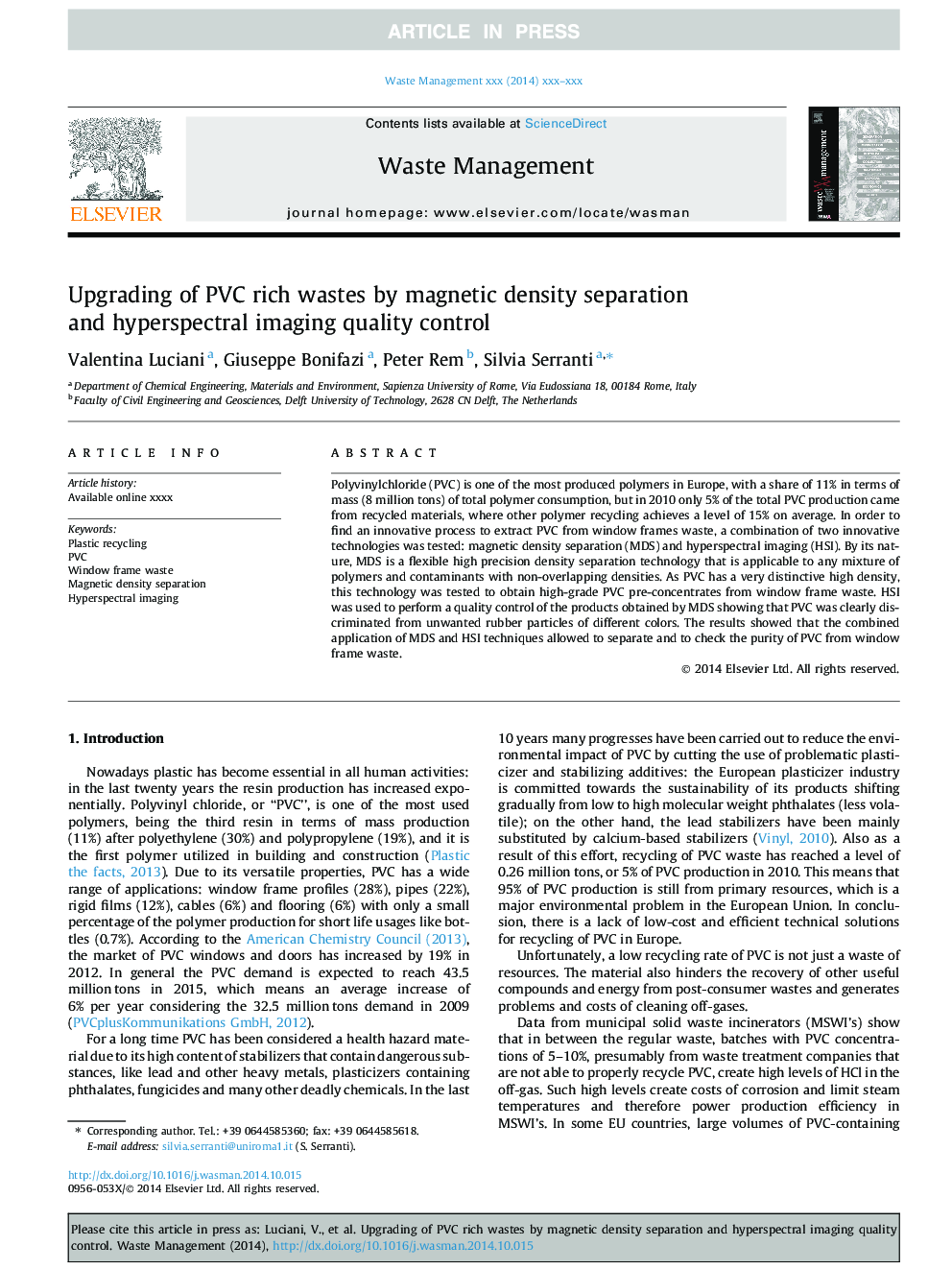| Article ID | Journal | Published Year | Pages | File Type |
|---|---|---|---|---|
| 6354282 | Waste Management | 2015 | 8 Pages |
Abstract
Polyvinylchloride (PVC) is one of the most produced polymers in Europe, with a share of 11% in terms of mass (8 million tons) of total polymer consumption, but in 2010 only 5% of the total PVC production came from recycled materials, where other polymer recycling achieves a level of 15% on average. In order to find an innovative process to extract PVC from window frames waste, a combination of two innovative technologies was tested: magnetic density separation (MDS) and hyperspectral imaging (HSI). By its nature, MDS is a flexible high precision density separation technology that is applicable to any mixture of polymers and contaminants with non-overlapping densities. As PVC has a very distinctive high density, this technology was tested to obtain high-grade PVC pre-concentrates from window frame waste. HSI was used to perform a quality control of the products obtained by MDS showing that PVC was clearly discriminated from unwanted rubber particles of different colors. The results showed that the combined application of MDS and HSI techniques allowed to separate and to check the purity of PVC from window frame waste.
Related Topics
Physical Sciences and Engineering
Earth and Planetary Sciences
Geotechnical Engineering and Engineering Geology
Authors
Valentina Luciani, Giuseppe Bonifazi, Peter Rem, Silvia Serranti,
